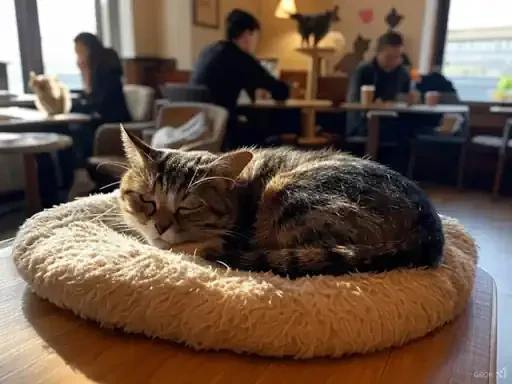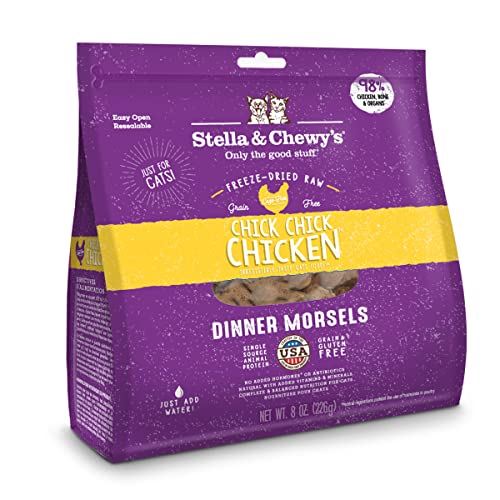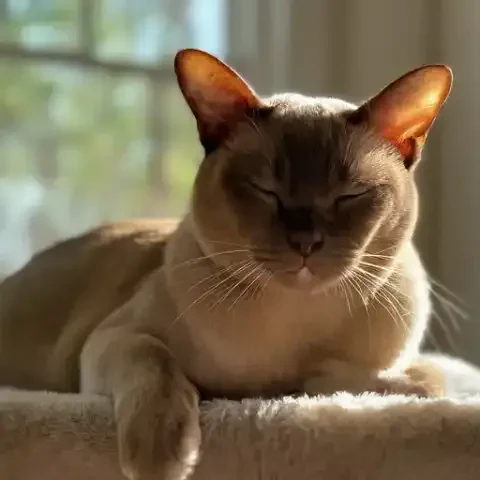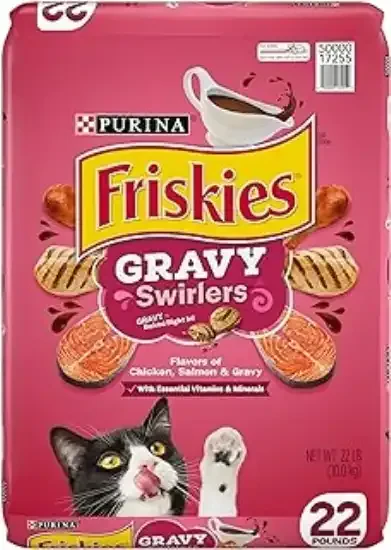Imagine stepping into a haven where the rich, comforting aroma of freshly brewed coffee dances in the air, mingling seamlessly with an even more soothing scent – the subtle, gentle, utterly captivating fragrance of feline contentment. Listen closely, and you’ll hear not just the clinking of mugs and hushed conversations, but a soft, continuous chorus of purrs, a vibrational symphony of feline relaxation. Welcome to the cozy, enchanting world of cat cafés, those unique havens where caffeine and cuddles collide in perfect harmony.
Are you craving a perfectly pulled latte and a generous dose of feline affection? Perhaps you long for the gentle company of a purring creature but cannot, for various reasons, welcome a cat into your own home. Or maybe you're simply seeking a different kind of café experience, one that’s infused with warmth, playfulness, and an undeniable dose of “aww.” Cat cafés offer the purr-fect solution, a delightful fusion of café culture and feline companionship. But these establishments are more than just trendy coffee shops with cats lounging around; they are unique spaces with a heartwarming mission, fostering connections between humans and felines in a way that’s both enriching and, often, deeply impactful.
Stepping into a cat café is often described as entering a different, gentler world. The stresses of the day seem to melt away as you are greeted by a welcoming chorus of meows, a playful swat of a paw reaching from beneath a chair, and a room full of furry, friendly faces, each one a unique personality eager for a chin scratch, a gentle head pat, or a playful chase with a dangling toy. This article is your invitation to explore this captivating phenomenon. We will delve into the very definition of a cat café, uncovering the essential elements that make it so unique. We will explore the irresistible appeal that has captured hearts worldwide, understanding why both cat lovers and the feline-curious are drawn to these cozy havens. We will trace the global pawprints of cat cafés, from their origins in Asia to their spread across continents, noting the fascinating regional variations that have emerged. We’ll step inside a cat café, describing the experience of a typical visit, from the aroma of coffee to the gentle art of feline interaction. Crucially, we will uncover the heartwarming rescue and adoption heart that beats at the center of many cat cafés, understanding their vital role in feline welfare. We will also navigate the ethical considerations, ensuring that our appreciation for cat cafés is grounded in a commitment to feline well-being. Finally, we’ll equip you with practical tips for planning your own purr-fect cat café visit, ensuring a delightful and meaningful experience for both you and the feline residents. Prepare to be charmed, to be soothed, and to discover the truly cozy world of cat cafés – a world where every cup of coffee comes with a side of purrs and a generous helping of heartwarming connection.
But what exactly is a cat café? Beyond the charmingly simple premise of coffee and cats, what are the core components that define this purr-fect concept? At its heart, a cat café is a business that masterfully blends two beloved concepts: the inviting atmosphere of a traditional café and the comforting presence of adorable, adoptable felines. Let’s break down the essential elements. First and foremost, it is, indeed, a café setting. This means you can expect to find all the hallmarks of a traditional coffee shop: the enticing aroma of freshly brewed coffee, a menu offering a variety of caffeinated and decaffeinated beverages, from lattes and cappuccinos to teas and perhaps specialty drinks. Often, you’ll find a selection of pastries, cakes, cookies, and sometimes even light meals or snacks, providing the full café experience in terms of food and beverage service.
However, the defining feature, the element that truly sets cat cafés apart, is the presence of resident cats. These aren't just any cats; they are carefully chosen felines, often from local animal shelters or rescue organizations, who freely roam within a designated area of the café, interacting with customers, playing, napping, and generally being their adorable feline selves. Crucially, in most ethical cat cafés, these resident cats are adoptable. This isn’t just a petting zoo; the cats are there to find their forever homes, and the café environment provides a unique and less stressful setting for potential adopters to meet and connect with them. To ensure both hygiene and feline comfort, cat cafés typically feature a separate cat area. This is usually a distinct space, physically separated from the food preparation and serving areas of the café. This separation is essential for maintaining food safety and hygiene standards while also creating a calmer and more comfortable environment for the cats, away from the hustle and bustle of food service. The entire concept is built around interaction and observation. Cat cafés are thoughtfully designed to allow customers to interact with, observe, and simply enjoy the company of the cats in a relaxed and welcoming setting. It's not about forced petting or chaotic environments; it’s about creating a space where humans and felines can connect in a gentle, mutually enjoyable way.
It’s crucial to emphasize that a cat café is not simply a petting zoo or a chaotic free-for-all with felines. The best cat cafés prioritize creating relaxing, comfortable spaces for both humans and cats. The atmosphere is generally calm and inviting, designed to be a stress-free haven where visitors can unwind, enjoy their coffee, and experience the therapeutic presence of cats. The interaction is typically gentle and respectful, encouraging visitors to approach cats calmly, observe their body language, and engage in quiet petting or play, rather than loud or overwhelming interactions. While "cat café" is the most common and widely recognized term, you might encounter other variations, such as cat bistros, cat lounges, or kitty cafes. These names often reflect slight variations in format or emphasis. Some establishments may lean more heavily towards the “café” aspect, with a broader food menu or a more formal dining setting, while others might emphasize the “lounge” element, creating a more relaxed and living room-like atmosphere for cat interaction. It’s also important to note that cat cafés are part of a broader trend of animal cafés in general. While cat cafés are by far the most prevalent, you might also find dog cafés, rabbit cafés, bird cafes, and even owl cafes in certain locations. Understanding cat cafés within this broader context helps to appreciate their unique niche within the evolving landscape of animal-human interaction spaces, while recognizing that our focus here is firmly on the cozy, purring world of felines and coffee.
The global phenomenon of cat cafés didn't emerge overnight. Their irresistible appeal, which has captured hearts and spread across continents, has its roots in Asia. The generally accepted origins of cat cafés trace back to Taiwan, with the first known establishment opening in Taipei in 1998. However, it was in Japan that cat cafés truly exploded in popularity and became a cultural phenomenon. Japan, with its densely populated urban centers and often restrictive apartment living situations that can prohibit pet ownership, proved to be fertile ground for the cat café concept. The demanding work culture and fast-paced lifestyle in Japan further contributed to the appeal of cat cafés as havens of relaxation and stress relief, offering a much-needed dose of feline calm in busy urban lives. From Japan, the cat café craze began to spread to the West, gradually making its way to Europe, North America, and beyond. As the concept crossed cultural boundaries, it naturally adapted and localized, taking on unique flavors in different regions. In Europe, cat cafés often blended seamlessly with existing café culture, emphasizing high-quality coffee and pastries alongside feline companionship. In North America, cat cafés frequently embraced the rescue and adoption model more overtly, partnering closely with shelters and highlighting their role in finding homes for cats in need.
These regional variations extend to various aspects of the cat café experience. Menu differences are a common example. While coffee and tea remain staples, the specific food and drink offerings can vary significantly based on local culinary traditions and cultural preferences. Japanese cat cafés might offer matcha lattes and traditional Japanese sweets, while European cafes might feature artisanal pastries and gourmet sandwiches, and North American cafes often offer a wider range of snack foods and baked goods. Décor and ambiance also exhibit regional and cultural twists. Japanese cat cafés often embrace minimalist, clean aesthetics, reflecting traditional Japanese design principles. Western cat cafés, in contrast, often opt for cozier, more eclectic, or themed décor, creating a warmer and more "home-like" atmosphere. Regulations and animal welfare standards for cat cafés can vary significantly between countries and regions. Some countries have strict regulations regarding animal welfare in commercial settings, while others have less defined frameworks. These varying regulations impact how cat cafés operate, the number of cats allowed, the space requirements, and the ethical considerations that must be addressed. Understanding these global pawprints and regional nuances adds depth to our appreciation of the cat café phenomenon, revealing how this simple yet ingenious concept has resonated across cultures while adapting to local tastes and contexts.
So, what can you actually expect when you embark on your first cat café adventure? Let's step inside and paint a picture of a typical purr-fect visit. Upon arrival, you'll likely be greeted by a friendly staff member who will guide you through a brief entry process. This often involves signing a waiver (common in establishments with animals), paying an entrance fee (many cat cafes charge a per-hour fee to access the cat area, often separate from food and drink purchases), and being given a quick overview of the café rules and guidelines. As you enter the designated cat area, the atmosphere is usually immediately apparent. Ethical and well-run cat cafés strive to create a relaxed, calm, and inviting ambiance. The noise level is generally low, the lighting is often soft, and the overall feeling is one of tranquility and gentle activity. The air hums with the low thrum of purrs and the occasional soft meow, creating a truly unique and soothing soundscape.
The heart of the cat café experience, of course, lies in the cat interactions. Etiquette and realistic expectations are key to ensuring a positive experience for both you and the feline residents. Respecting cat boundaries is paramount. Remember, these cats are individuals with their own personalities and preferences. Approach them gently, observe their body language, and never force interaction. If a cat is sleeping, curled up in a cozy spot, or appears disinterested in attention, respect their space and allow them to relax undisturbed. Reading cat body language is a valuable skill to practice in a cat café setting. Learn to recognize feline cues. Ears forward, relaxed posture, slow blinks – these are often signs of a happy and approachable cat. Flattened ears, hissing, a twitching tail – these are clear signals that a cat is feeling stressed or uncomfortable and needs space. When interaction is welcomed, play, petting, and quiet observation are typically the encouraged forms of engagement. Most cat cafes provide an array of toys – wands, feather teasers, laser pointers – to encourage playful interaction (always with gentle and respectful play). Gentle petting is usually welcomed by many cats, particularly on their head, chin, and back (observe their preferences!). And simply observing the cats in their environment – watching them groom, play with each other, nap in sunbeams, or explore their surroundings – can be a deeply relaxing and enjoyable experience in itself. Remember to follow the café rules and guidelines. These rules are in place for good reason – to ensure cat welfare, visitor safety, and the overall positive experience for everyone. Common rules often include: no waking sleeping cats, no flash photography (it can be stressful for felines), hygiene protocols like hand sanitizing before and after interacting with cats, and restrictions on bringing outside food or drinks into the cat area.
Beyond the feline charm, the café offerings themselves are an integral part of the experience. Expect a menu variety similar to a typical coffee shop. Coffee, tea, and espresso-based drinks are staples. Pastries, muffins, cookies, and cakes are common sweet treats. Some cat cafes also offer savory snacks, sandwiches, salads, or light meals, expanding their culinary offerings beyond just coffee and sweets. Many cat cafes also feature cat-themed merchandise and souvenirs. You might find cat-themed mugs, t-shirts, tote bags, toys, and other gifts for sale, often with proceeds supporting the café’s rescue partners. Some cat cafes go beyond the daily café experience and host events and special programs. These might include adoption days, in partnership with local shelters, yoga sessions with cats (a surprisingly popular trend!), themed evenings, or workshops related to cat care and behaviour.
But cat cafés are often more than just trendy spots for coffee and cute cats; many operate with a deeper, more heartwarming purpose: cat rescue and adoption. The vast majority of cat cafés partner with local animal shelters and rescue organizations. This partnership forms the very foundation of their mission, creating a symbiotic relationship that benefits both the café and, most importantly, cats in need. The cats residing in the café are typically adoptable felines, carefully selected from partner shelters. This arrangement offers a multitude of benefits for facilitating adoptions. Cat cafés provide visibility and exposure for cats that might otherwise be overlooked within a traditional shelter environment. Shelters, while vital, can be stressful places for cats, and potential adopters may not get to see their true personalities shine in a cage setting. Cat cafés offer a “meet and greet” in a relaxed setting. The café environment, designed to be comfortable and engaging, allows potential adopters to interact with cats in a more natural and less stressful atmosphere than a typical shelter visit. This relaxed interaction allows for genuine connections to form, helping people find the purr-fect feline match for their homes and lifestyles. Many cat cafes also streamline the adoption process. Some cafes facilitate adoptions directly, handling applications and paperwork on-site. Others act as a bridge, providing adoption information and connecting interested visitors directly with their partner shelters, making the adoption process more accessible and user-friendly.
Beyond adoptions, cat cafés actively support rescue missions in various ways. Fundraising and donations are common practices. Many cat cafes donate a portion of their profits directly to their partner rescue organizations. They also often host specific fundraising events, like donation drives or special menu items with a portion of proceeds benefiting rescue efforts. Cat cafes serve as valuable platforms for raising awareness about cat adoption, responsible pet ownership, and the broader needs of shelter animals. They educate visitors about the importance of adoption, dispel common misconceptions about shelter cats, and promote responsible pet care practices. Crucially, cat cafés provide temporary homes and socialization opportunities for cats awaiting adoption. The café environment offers a less stressful and more stimulating setting than a typical shelter, helping cats to become more socialized, comfortable around humans, and better prepared for life in a home, significantly improving their chances of finding their forever families.
With the increasing popularity of cat cafés, it's essential to consider the ethical considerations that underpin these establishments. Ensuring feline welfare as the top priority must be the ethical compass guiding every cat café operation. An ethical cat café is one where the well-being of its feline residents is placed above all other considerations, including profit or trends. There are key ethical practices to look for when evaluating a cat café. A spacious and enriching environment is paramount. An ethical café will provide ample space for cats to roam freely, climb, play, and retreat when needed. This includes enriching elements like climbing structures, scratching posts, toys, and comfortable resting areas, creating a stimulating and engaging environment that caters to feline behavioural needs. Dedicated cat staff and clear care protocols are essential. Ethical cafes employ staff who are specifically trained in feline care, behavior, and hygiene. They have established protocols for feeding, cleaning litter boxes, grooming, health monitoring, and ensuring the cats’ overall well-being. A quiet and calm atmosphere is vital for feline comfort. Ethical cafes prioritize maintaining a calm and non-stressful environment, minimizing loud noises, avoiding overcrowding, and ensuring interactions between humans and cats are gentle and respectful. Robust veterinary care and health protocols are non-negotiable. Ethical cat cafes have established relationships with veterinarians and ensure regular check-ups, vaccinations, parasite prevention, and prompt medical care for any health issues that arise. They also have clear protocols for isolating and managing sick cats to prevent the spread of illness. Finally, an ethical cat café will have a clear adoption focus and responsible sourcing practices. They partner with reputable rescue organizations and prioritize adoption as their primary goal. They do not source cats from breeders or kitten mills and are committed to promoting responsible pet ownership and reducing pet overpopulation.
Conversely, there are “red flags” to watch out for that might indicate a cat café is not prioritizing feline welfare. Overcrowding and a stressful environment are major warning signs. If the cat area feels cramped, overcrowded with people, noisy, or chaotic, it is likely stressful for the cats. Signs of stressed cats, such as excessive hiding, hissing, flattened ears, or attempts to escape interactions, are clear indicators of a potentially problematic environment. A lack of visible cat care or hygiene is another red flag. Unclean litter boxes, food and water bowls that are not regularly cleaned, a general lack of cleanliness in the cat area, or a lack of staff attention to the cats’ needs are all concerning signs. Cats seeming unhappy or unwell is perhaps the most obvious red flag. Cats appearing lethargic, unwell, showing signs of illness, fear, or aggression, or seeming withdrawn and unhappy are strong indicators that their welfare may not be prioritized. Finally, unclear sourcing or adoption practices should raise concerns. If the café is vague about where their cats come from, if they seem to be sourcing cats from breeders or unknown sources rather than rescues, or if their adoption process is unclear or non-existent, it’s worth questioning their ethical practices and motivations.
Planning your first cat café visit? Here are some tips for making it purr-fect for everyone. First, research and choose a reputable café. Before visiting, do a little online sleuthing. Read online reviews, check their website for information about their cat welfare practices, and see if they partner with recognized rescue organizations. Check the café’s website or call ahead. Many cat cafes have websites with information about their rules, hours, pricing, and the cats currently in residence. Some cafes may require reservations, particularly during peak hours. Checking their website or calling ahead can help you plan your visit and avoid disappointment. If possible, go during off-peak hours. Cat cafes are often busiest on weekends and during peak café hours. Visiting during off-peak times, like weekday afternoons, can often provide a calmer and potentially more intimate experience with the cats, with fewer crowds and less noise. Be patient and observe cat body language. Remember, the cats are the stars of the show. Approach them gently, observe their cues, and allow them to initiate interaction. Don't rush in for cuddles immediately; give them time to adjust to your presence. Follow the café rules and guidelines without exception. These rules are in place for the well-being of the cats and the enjoyment of all visitors. Respect them fully. And finally, consider supporting the café beyond just buying coffee. If you enjoy your visit and appreciate their mission, consider purchasing cat-themed merchandise, making a small donation to their partner rescue organization, or simply spreading the word about the café to your friends and family. Every little bit helps to support their valuable work.
In conclusion, cat cafés are more than just a fleeting trend; they are cozy corners of community and compassion, offering a truly unique and heartwarming experience that blends the simple pleasures of coffee with the undeniable charm of cats. Their appeal is multifaceted: providing a joyful dose of feline companionship for cat lovers, offering a stress-relieving and novel café experience for all, and, crucially, supporting the vital work of cat rescue and adoption. When ethically operated, with feline welfare as the guiding principle, cat cafés offer a valuable service, creating spaces that foster connections, promote compassion, and offer a purr-fect blend of caffeine and cuddles. So, the next time you’re looking for a cozy escape, a dose of feline therapy, or simply a unique café experience with a heartwarming mission, consider exploring the delightful world of cat cafés. Grab a latte, find a purring friend amongst the furry residents, and discover your new favorite happy place, a place where every sip of coffee comes with a side of purrs and a generous helping of feline joy.







